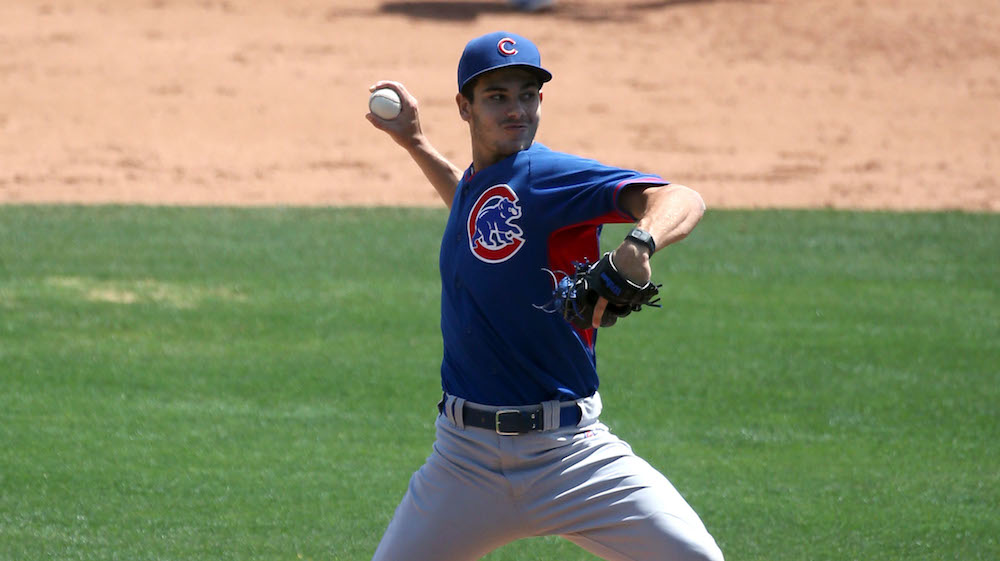Feature Photo: Dylan Cease, RHP, Cubs
In this week’s minor league update, Nick J. Faleris has an update on 18-year-old top prospect Anderson Espinoza, who was traded from the Red Sox to the Padres on July 14, while new 2080 contributor Spencer Hansen was able to get a fresh look at Cubs prospect Dylan Cease, spotlighting his July 5 start in less-than-ideal weather conditions for the Short-Season A Eugene Emeralds of the Northwest League. Plus, we’ve launched our 2017 MLB Draft video library this week, publishing 11 new videos from the USA Collegiate National Team’s recent trip through Southern California in early July.
Double-A Prospect Spotlight
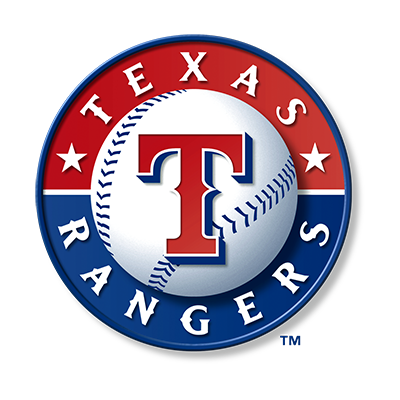 Lewis Brinson, OF, Rangers (Double-A Frisco, Texas League)
Lewis Brinson, OF, Rangers (Double-A Frisco, Texas League)
Ht/Wt: 6’3” / 195 B/T: R/R Age: 22 yrs, 2 m
Ranked 2080 Baseball’s 14th-best prospect in the game entering 2016, Brinson started off slowly for Double-A Frisco before missing most of June with a shoulder injury. Since returning the former first rounder has been swinging a hot stick, slashing .361/.410/.750 over 39 plate appearances in July, including a monster three-game series against Northwest Arkansas in which Brinson hit .500 and homered in each contest.
The Coral Springs H.S. (Coral Springs, FL) product is a dynamic talent, possessing plus speed, double-plus raw power, an above-average arm, and good instincts in the field. He has the physical ability to play any outfield position, and he should perform as a top-tier defensive center fielder long term, already showing that level of play at times. Additionally, he’s an asset on the bases, showing a solid feel for the craft of stealing bases, and comfort grabbing an extra bag on balls in play when the opportunity arises.
In the batter’s box, Brinson takes big cuts to big effect when he is seeing the ball well. There’s all-fields power in the barrel, and enough feel for contact to give hope that he can continue to cut down on empty swings even as he faces more advanced arms at the upper levels. His second half will be watched closely by the Rangers and rival evaluators alike, as the excess outfield depth in the system makes Brinson, along with fellow top-shelf prospect Joey Gallo, prime trade targets. He could be ready to help out a big league club as early as next year. – Nick J. Faleris
Single A Prospect Spotlights
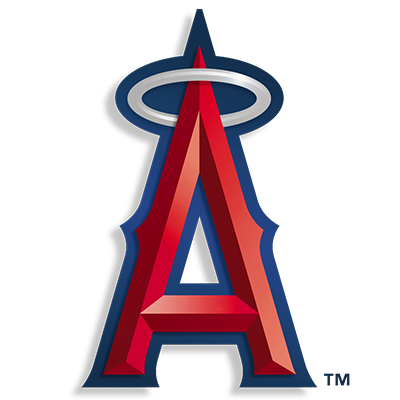 Taylor Ward, C, Angels (High A Inland Empire, California League)
Taylor Ward, C, Angels (High A Inland Empire, California League)
Ht/Wt: 6’1”/185 B/T: R/R Age: 22 yrs, 7m
Ward, the 2015 first rounder, entered the 2016 season as the Angels #1 prospect according to MLB.com. Last season, in 201 post-draft ABs, Ward hit .348 with a .438 OBP, highlighted by a very patient approach at the plate (39 BB to only 23 SO) while catching 420 ⅔ innings.
Ward has a very quiet setup with a short load and really looks to shoot the ball back up the middle and to right-center field. His barrel stays level through the zone, but he tends to get slightly rotational and will open the front side early in order to get his hands through on balls middle-in. He does a good job handling balls middle-away, and has the strength to drive balls to the right-center gap, however when pitchers are able to pitch him in, he sees the ball run up the handle a bit and struggles to get the barrel out front in time.
His 2016 numbers have fallen off a bit. He has a respectable BB:SO ratio of 25:50, but his average is down to .245 without much damage (only seven doubles and two HRs across 298 ABs). He has been better so far in the second half with a .318 average and 8:9 BB:SO ratio, but the lack of damage remains, as only three of his 21 second-half hits have gone for extra bases. He is playing at a higher level than 2015, and surely with a #1 prospect ranking hanging around his neck, teams have done a little more homework on him. So if he can maintain the second-half turnaround, it will speak a great deal to his ability to adjust to the next level. He is a strong, athletic kid who still has some strength projection in the frame, so he could find some gap power going forward.
Defensively, Ward has a bit of a narrow base and gives a high target, but stays relatively quiet with his hands and is quick to his knees. His arm wasn’t tested in this look, but based on his throws in pregame infield/outfield, it looks like he has average arm strength with some accuracy. He is in an organization that prioritizes pitch framing and defense at the position, so he will need to show an aptitude for those aspects in order to stay in the Angels’ future plans at catcher. That said, in a short look it seems like Ward has the tools to be a solid defensive catcher who may end up making enough contact to eventually work himself into a contributor at the big league level. Stay tuned for a full report in the coming weeks as I get a chance to see him play a little more. – Dave DeFreitas
 Jeremy Rhoades, RHP, Angels (High A Inland Empire, California League)
Jeremy Rhoades, RHP, Angels (High A Inland Empire, California League)
Ht/Wt: 6’4”/225 B/T: R/R Age: 23 yrs, 5m
The 2015 season was a bit of a rollercoaster for the 4th-rounder Rhoades – he handled the Midwest League with relative ease, whiffing 78 through 87 innings and posting a 1.08 WHIP, but gave up a significant amount of hard contact and struggled with the HR ball upon his promotion to the Cal League (14 HRs and 65 hits through 50.2 IP) despite a well-above-average ground ball rate (1.68) and more than a K per inning (57 Ks in 50.2 IP). Thus far in 2016, Rhoades’ struggles to adjust to Cal League hitters has continued. His failure to replicate the success he enjoyed in the Midwest League is fueled by the fact that he is walking 3.5 batters per nine IP, and giving up hits at a 9.2-per-9 clip. The hits are down from 11.2 per nine IP in 2015, but that is still a lot of baserunners to be consistently working around, and to make matters worse his K rate has declined by almost 50% (10.1 Ks/9 in 2015 to 5.6 Ks/9 this year). While I did not see him last season, word is that his fastball velocity is down a fair bit, which would mean that his margin for error in the zone is drying up, and speaks to the reason why there has been such a precipitous fall in his strikeout numbers.
After seeing Rhoades throw earlier this week, the stuff and pitchability he showed does not line up with how bad things have been going for him. He has a compact arm action and has the makings of two fringe-average to average secondary pitches. The slider is small with tight rotation and he will get some 3/4’s bite, but it shows inconsistent break, and will have it back up on him too often. Through 8.2 IP he showed a handful of average sliders that generated some chase, but struggled to repeat that on a consistent basis.
The changeup is probably his best pitch, getting some dive/bottom with a more consistent ability to replicate the good action. He has some confidence with it, as he doubled up on a couple occasions and isn’t scared to use it vs. RHH. So considering those two aspects, that even with the velo decline of the fastball, he should be able to avoid the barrel more often than he has of late. However, he tends to miss up and out over the plate with the fastball, where even above-average velo tends to get squared up. Not being able to work ahead with any kind of consistency is a big blow to the usability of his secondaries because he lacks the good feel with those pitches to use them in fastball counts on a regular basis.
He showed some poise and did an OK job of adjusting this time out after giving up back-to-back home runs to lead off the game – he still gave up 11 hits through 8 ⅔, but was consistently in the zone and tried to mix in more offspeed earlier in the count to try and get guys off the fastball. Ultimately, it sounds like his stuff has regressed a little bit from 2015 and that, coupled with the poor command, is causing him to find a lot of barrels. This time out he managed to find a decent amount of soft contact which led to some quick innings, but he is not locating enough to make that a sustainable model for success. So overall, while I think Rhoades is better than what he has shown so far in 2016, the lack of command of a below-average fastball and inconsistencies in his secondary stuff is making it hard for him to compete, and those factors will keep him from advancing until he adjusts. – Dave DeFreitas
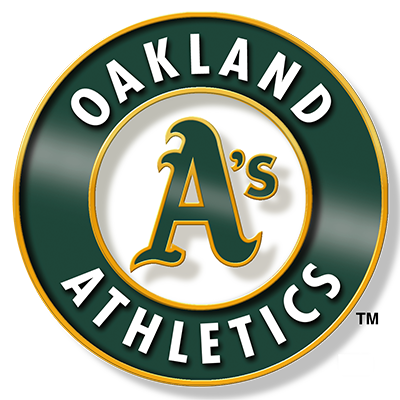 Matthew Sergey, RHP, A’s (High A Stockton, California League)
Matthew Sergey, RHP, A’s (High A Stockton, California League)
Ht/Wt: 6’4”/180 B/T: R/R Age: 26 yrs 11m
Sergey was recently signed to a minor league contract on July 1 by Oakland after spending the last three-and-a-half seasons pitching through various teams in the independent leagues. Before coming to Stockton, Sergey was a member of the Laredo Lemurs in the American Association Independent League, where he went 4-0 in seven Starts, striking out 56 over 44 innings and giving up only four runs.
Since joining Stockton, Sergey has continued to get people out by missing bats (two starts, 11 IP, 14 Ks, two walks). During his second start for Stockton, at San Jose on July 10, Sergey went six innings allowing four base runners and striking out eight.
Sergey’s got a medium athletic build and is lanky with long arms. The arm comes full circle and out of a high 3/4’s release point, with a delivery that has a pause over the rubber before dropping his hands and driving towards the plate. He is definitely a max-effort thrower and the delivery is very slow and methodical. His slow delivery was taken advantage of, as he gave up four stolen bases in the first two innings while pitching around dangerous situations. After those first two innings, though, Sergey was dealing, as he got nine straight outs before giving up a solo home run to lead off his final inning. During that run of outs, he also recorded five strikeouts.
He works with a fringy fastball sitting 89-to-90 mph (T92) that was generally straight, but can get some added life up in the zone. During my look, Sergey was fastball dominant and utilized the pitch all over the plate, commanding it best to the glove side while going up the ladder for strikeouts. There were times where it looked like the fastball snuck up on some hitters, but I attribute this to a Sunday day game with shadows moving between the mound and the hitters.
Sergey threw two off-speed pitches, a below-average slider and a fringy changeup. The changeup (81-to-84 mph, T86) was straight, having a little sink while coming out looking like a fastball. He did a good job of picking his spots for this pitch, throwing it in a few Fastball counts and getting hitters to swing off their front foot. The slider (79-to-83 mph, T84) has hard lateral spin with some cut to the glove side. The pitch was mainly used off the plate to righties, looking to get them to chase out of the zone.
Overall Sergey showed fringy command, but was able to tease the edges of the zone just enough so that hitters would attempt at it but ended up missing or making weak contact for easy fly balls outs (17 of 18 outs were Ks or fly balls).
Seeing as Sergey is almost 27 years old and pitching for his first time at the High A level, and given the limited velocity separation between his pitches, the best I could see him project is to that of an up-down, AAAA player. The most likely outcome is that he is just an organizational arm. – Ryan Ozella
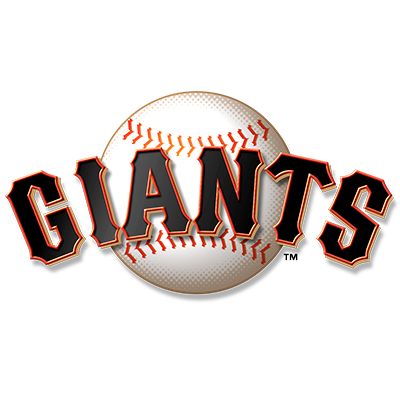 Dylan Davis, OF, Giants (High A San Jose, California League)
Dylan Davis, OF, Giants (High A San Jose, California League)
Ht/Wt: 6’0”/205 B/T: R/R Age: 22 yrs, 11m
The Giants have pushed Davis quickly since making him their third-round pick out of Oregon State in the 2014 MLB Draft, starting him last year at San Jose before he struggled to a .206/.295/.318 and was sent to Class A Augusta to regain his confidence. This year the Giants did the opposite, starting him at Augusta, and he rewarded them by hitting .288/.368/.496 with 29 extra-base-hits, including 17 2Bs and eight HRs. He was called up to San Jose on June 29, where he has continued to find success at High A, though the numbers have come down a bit.
Davis has a quite set-up and holds his hands high, with the barrel on the shoulder and a slightly open stance. He lifts the bat from the shoulder at the same time as he starts a high front-leg lift as a timing mechanism. When he’s got the timing of the pitch, he shows quick hands that will create natural upward lift in his swing. He looks to drive pitches to the middle of the field and has the ability to lift the ball into the gaps. During batting practice I’ve seen some flashes of raw gap-to-gap power with the ability to turn on pitches in as well. Though his swing gets some natural lift, it also gets long while missing on off-speed pitches off the plate. The strikeouts are an issue (204 in 209 career games) and I’ve seen pitchers regularly set him up by throwing the fastball hard in early and challenging him to hit this pitch before having him chase sliders and curveballs on the outer half. This has caused Davis to look for fastballs early and good pitchers have noticed and switched the sequence the second and third times they’ve faced him.
Davis’ big body and thick lower/middle half puts him at a disadvantage defensively, as he is a plodding runner in right field. On the base paths, Davis is a station-to-station type of runner and will need to continue to work on his athleticism to be able to get extra bases. His best attribute in the field is his arm, but he hasn’t been tested in the action that I’ve seen. At Oregon State, he also pitched, and during pregame he has definitely let loose, but his poor speed limits him on defense and puts into question what position he would play at the big league level. I’ve only seen him defensively for a couple games as he normally DH’s, but I hope to put together a full report in the coming weeks after I see him in the field a bit more. – Ryan Ozella
 Anderson Espinoza, RHP, Padres (Class A Fort Wayne, Midwest League)
Anderson Espinoza, RHP, Padres (Class A Fort Wayne, Midwest League)
Ht/Wt: 6’0” / 160 B/T: R/R Age: 18 yrs, 4 m
The owner of an electric arm and immense potential, Espinoza was shipped from Boston to San Diego on July 14 in a trade for All-Star lefty Drew Pomeranz. The promising young righty has had a strong first run through full-season Class A ball, despite being tasked with facing competition generally three-to-five years his senior, showcasing a lively mid-90s fastball that can flirt with triple digits, a 12-to-6 bender that will flash plus or better, and an impressive changeup with sharp fade and dive that can likewise come with at least plus grades from evaluators when on.
As would be expected of an 18-year-old in Class A ball, there are still rough edges for Espinoza to smooth out. While the arsenal is big-boy quality, Espinoza is still learning to wield it with consistency, and can often times struggle with effective execution in the zone – particularly with his curveball. Over his last seven starts (covering each of his appearances in June and July), Espinoza has averaged upwards of 20 pitches per inning, often times running deep into counts and allowing hitters to sit on fastballs. While he is generally around the zone, he will also slip into bouts where he drives his fastballs up, and particularly to the arm side, though he has generally done a good job of quickly correcting course in-game.
While his slight stature and impressive raw stuff has drawn him unfair comparisons to Red Sox great Pedro Martinez, there is indeed true frontline upside in Espinoza, with a chance for three legitimate double-plus offerings, and with an ability to dominate opposing lineups when it all comes together. That staggering version of Espinoza, however, is still some time away. And while his natural talents, easy delivery, and high-quality arsenal could all congeal in very short order, there are likely to be some bumps in the road along the way. If the undersized righty is able to shoulder the trying load of a big league starter, he has the potential to be one of the best in the game. – Nick J. Faleris
 Dylan Cease, RHP, Chicago Cubs, (Short-Season A Eugene, Northwest League)
Dylan Cease, RHP, Chicago Cubs, (Short-Season A Eugene, Northwest League)
Ht/Wt: 6’2’’/190 B/T: R/R Age: 20 yrs, 7m
I was on hand to watch Cease July 5, in wet conditions against Everett. The former sixth-round pick from 2014, who garnered a well-above-slot $1.5 million bonus to sign with the Cubs after Tommy John surgery deflated his draft value from his projected first-round potential, Cease had early trouble establishing his fastball, and he was lit up for four straight hits in the first inning. He settled in after that and wound up going five full innings, allowing just those four hits while giving up two runs, walking two and striking out four. The command issues aside, it was good to see his competitiveness come out, recovering to getting hitters out on a night he didn’t have his best stuff, nor the best command of his fastball.
Cease has lean frame, and the body is still under-developed, but given his age he should fill out, and the added strength should help his durability over the long haul. He has a fairly repeatable delivery thanks to his athleticism, but on this night he struggled to find his release point, something that I attribute more to the weather conditions than some mechanical flaw. The weather also seemed to affect his ability to grip the ball. His arm action was short, compact and clean, coming from a high three-quarters arm slot. Cease exerts moderate effort in his delivery, and finishes in an athletic fielding position, showing that athleticism on pickoff moves to first, and also when fielding a bunt.
The fastball consistently sat 95-to-97 mph, (T98), and he was able to maintain his velo throughout the outing, which is certainly a benchmark that the Cubs want to see given the T.J. surgery. The fastball flashed some arm-side run on the outer half of the plate, as well as some sink when thrown in the lower third of the zone. The sink was due to him pulling down more with his core, and also from a release point that got more out front at times. His command should improve as he continues to build innings, arm strength, and confidence as the year progresses.
His curveball sat 76-to-78 mph (T82 once), but it lacked consistent break and had some loopy shape up in the zone, which again could be because of the weather. He did snap off four to five curveballs that had solid 12-to-6 break landing in the dirt, perhaps previewing the pitch as a solid putaway. He’s only 21.2 innings into the season and has thrown just 45.2 as a pro, so I would expect his curveball shape and command to improve as he eats more innings and builds it into his repertoire more frequently.
He only threw the changeup twice, and neither was near the zone, but it displayed solid velocity separation from the fastball, coming in around 85 mph, though it’s very much a work-in-progress third offering. The change is going to need to be developed fully for him to stay as a starter, but he is still just 20 years old, so there is plenty of time to iron out both of his secondaries and sequencing so his double-plus fastball can be a more effective weapon.
For now, it’s a fastball-dominated approach, and that’s probably just fine with the Cubs’ front office at this stage of his development. There’s no reason to think the Cubs won’t let him stretch out his innings into the 50-60 range this year, looking for him to refine his command and develop his secondary offerings while simply staying healthy for the full season as the primary benchmarks for a successful 2016. – Spencer Hansen

